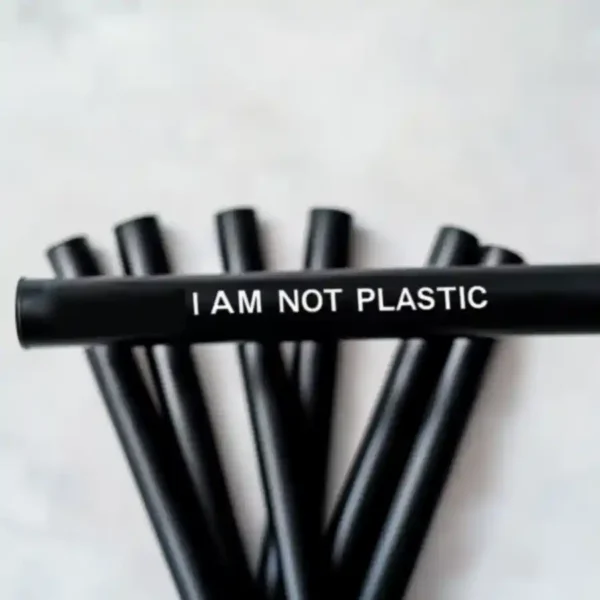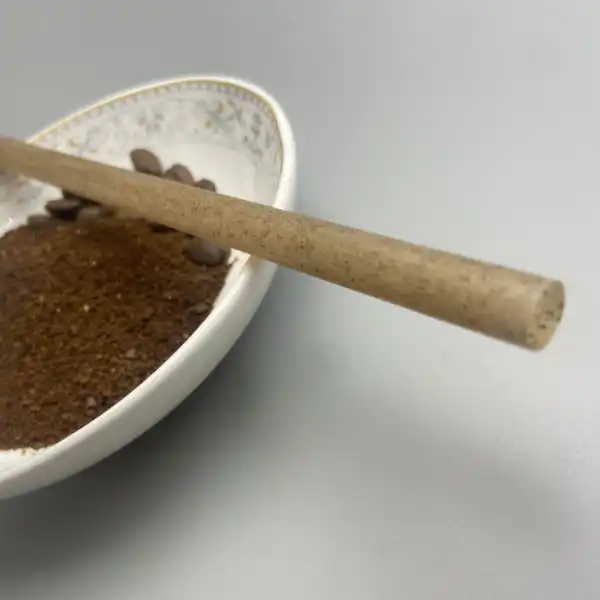Sustainable B2B Solutions: Sugar Cane Straws for Eco-Conscious Businesses

Introduction: Plastic Bans and Sugar Cane Straws Eco-Friendly Alternative Benefits

Picture this: You’ve just opened your morning emails to discover that your city has joined the growing list of jurisdictions banning single-use plastics, effective in 90 days. As a hotel purchasing manager, restaurant chain supplier, or distributor serving hundreds of businesses, you’re suddenly faced with an urgent challenge. What alternatives can you source quickly that won’t dissolve in drinks, frustrate customers, or break your budget?
This scenario is playing out acros the globe as plastic straw bans continue to sweep through major markets. According to the United Nations Environment Programme, over 127 countries have now implemented some form of regulation against single-use plastics, with more joining the movement every quarter. These regulations aren’t just suggestions—they come with teeth. In California alone, businesses can face fines up to $2,000 per day for non-compliance with plastic straw regulations.
In this rapidly changing landscape, sugar cane straws have emerged as a leading sustainable solution that satisfies both regulatory requirements and customer expectations. Unlike their plastic predecessors, these plant-based alternatives originate from bagasse—the fibrous byproduct left after extracting juice from sugar cane. This agricultural waste, typically burned or discarded, finds new purpose as an eco-friendly drinking straw that performs remarkably similar to conventional plastic options.
What makes sugar cane straws particularly appealing for B2B operations is their practical performance. They don’t become soggy in cold drinks for up to 6 hours, maintain structural integrity in hot beverages up to 190°F, and provide the familiar user experience customers expect. For businesses navigating the transition away from plastic, these performance characteristics mean you can meet sustainability goals without sacrificing functionality.
As we explore the world of sugar cane straws for your busines operations, we’ll unpack everything from regulatory compliance to cost analysis, environmental benefits to real-world succes stories. Whether you’re supplying hotels, cafes, event venues, or distribution networks, this comprehensive guide will equip you with the knowledge to make informed decisions about integrating sugar cane straws into your sustainable busines strategy.
Regulatory Compliance: Certifications for Sugar Cane Straws Eco-Friendly Alternative

Navigating the complex landscape of food-contact regulations acros global markets requires understanding the certifications that matter most. For B2B buyers sourcing sugar cane straws, two primary certifications stand as the gold standard: FDA certification in North America and LFGB certification for European markets.
The FDA’s food contact material regulations ensure that all components coming into contact with food and beverages meet strict safety standards. When sourcing FDA-certified compostable straws for cafes and restaurants, businesses gain not just legal compliance but also customer confidence. According to a 2022 industry compliance report, businesses using non-certified food contact materials faced an average of $14,500 in regulatory penalties, not counting the cost of product recalls and reputation damage.
Similarly, LFGB certification (German Food, Articles of Daily Use and Feed Code) provides the European benchmark for food-contact safety. These certifications are non-negotiable for serious B2B suppliers, especially those serving international markets or premium hospitality venues.
Beyond safety certifications, compostability verification has become increasingly important. Home compostable certification means the straws will break down in a home composting environment within 180 days—a significant advantage over materials requiring industrial facilities. This certification allows businesses to make legitimate environmental claims that resonate with eco-conscious consumers and comply with truth-in-advertising regulations.
A notable case example comes from a major hotel chain that switched to uncertified “eco-friendly” straws in 2021, only to face both regulatory scrutiny and customer complaints about misleading environmental claims. The lesson? Proper certification isn’t just paperwork—it’s protection for your busines reputation and a shield against regulatory penalties that can quickly erase any cost savings from choosing uncertified alternatives.
How Sugar Cane Straws Eco-Friendly Alternative Compares to Other Eco Alternatives

When evaluating sustainable straw options for your busines, understanding the comparative advantages and limitations of each material type becomes crucial for making an informed decision. Sugar cane straws offer a distinct profile of benefits when compared to other popular alternatives:
| Material | Durability in Drinks | Compostability | Cost Efficiency | Production Footprint | Customer Experience |
|---|---|---|---|---|---|
| ———- | ——————— | —————- | —————- | ——————— | ——————— |
| Sugar Cane | 4-6 hours in cold, heat-resistant to 190°F | Home compostable in 90-180 days | Medium range, decreasing with volume | Upcycles agricultural waste, low water usage | Most similar to plastic experience |
| Paper | 1-2 hours before softening | Recyclable/compostable | Low initial cost, higher replacement rate | Higher water usage in production | Often becomes soggy, customer complaints |
| PLA (Corn-based) | Excellent, similar to plastic | Industrial facilities only | Medium | Requires dedicated cropland | Indistinguishable from plastic for users |
| Bamboo | Excellent durability | Home compostable | Higher than most alternatives | Low impact but specific growing regions | Distinctive natural texture |
| Metal | Indefinite | Reusable, not compostable | Highest initial investment | Resource-intensive production | Requires cleaning infrastructure |
A 2023 waste analysis study by the International Food Service Sustainability Coalition found that 67% of PLA straws end up in landfills rather than proper composting facilities, negating much of their environmental benefit. In contrast, sugar cane straws can break down in home composting systems, making their end-of-life scenario more realistic regardles of local waste infrastructure.
The practical implications for businesses are significant. Hotels using paper straws reported needing to provide 2-3 straws per guest due to rapid degradation in drinks, increasing both costs and waste. Meanwhile, cafes experimenting with reusable options faced significant back-of-house challenges with cleaning and sanitizing protocols.
Sugar cane straws present a pragmatic middle ground—offering sufficient durability without requiring changes to operational workflows or waste handling systems. For wholesale sugar cane straws buyers seeking a balance of performance and sustainability, this agricultural byproduct solution often emerges as the most practical transition from traditional plastics.
Top Busines Benefits of Switching to Sugar Cane Straws Eco-Friendly Alternative

Beyond mere compliance with plastic bans, transitioning to sugar cane straws presents multiple strategic advantages for forward-thinking businesses. The ROI extends well beyond the simple cost-per-unit calculation.
**Enhanced Brand Perception**
A 2023 Nielsen consumer study revealed that 73% of global consumers would definitely or probably change their consumption habits to reduce environmental impact. More tellingly, businesses highlighting sustainable practices on their marketing materials saw a 21% increase in customer perception of quality—regardles of price point. When businesses invest in custom branded sugar cane straws, they transform a necessary expense into a tangible brand asset that communicates values with every sip.
**Operational Consistency**
Unlike some eco-alternatives that require staff training or customer education, sugar cane straws provide a nearly identical user experience to plastic. This means no disruption to service flow or customer expectations. For multi-location businesses or franchises, this consistency is particularly valuable, allowing for system-wide implementation without location-specific adaptations.
**Cost Stabilization**
While plastic straw prices fluctuate with petroleum markets, sugar cane straws offer more stable pricing since they’re derived from agricultural byproducts. Additionally, as plastic straw taxes and penalties increase (with some jurisdictions imposing fees up to $0.25 per plastic straw distributed), the comparative economics increasingly favor sustainable alternatives.
**Supply Chain Resilience**
Diversifying away from petroleum-based products reduces exposure to oil price volatility and supply chain disruptions in the petrochemical industry. Sugar cane production occurs in more geographically distributed regions, potentially offering more reliable sourcing options during global supply chain challenges.
**Waste Reduction Economics**
For businesses paying by volume for waste disposal, compostable straws can significantly reduce waste management costs. A mid-sized hotel chain implementing sugar cane straws reported a 4.3% reduction in overall waste disposal costs—a saving that substantially offset the premium paid for sustainable straws. When factoring in these operational savings alongside the marketing value, the total busines case for sustainable straws for distributors becomes compelling.
Environmental Impact: Why Sugar Cane Straws Eco-Friendly Alternative Wins

The environmental advantages of sugar cane straws extend well beyond their plastic-free composition. When analyzing their complete lifecycle, several key ecological benefits emerge that position them favorably against both conventional plastics and other alternatives.
Carbon footprint reduction stands as perhaps the most significant benefit. According to the International Sustainable Materials Institute, sugar cane-based products can achieve up to 80% lower carbon emissions compared to their plastic counterparts. This dramatic reduction stems from two factors: the carbon sequestration during the sugar cane growing proces and the repurposing of agricultural waste that would otherwise be burned (releasing additional CO2).
Water conservation presents another compelling advantage. While paper straw production requires significant water input—approximately 13 gallons per pound of finished product—sugar cane straws utilize an existing agricultural byproduct, adding no additional water demand beyond what’s already used in sugar production. In water-stressed regions, this distinction becomes increasingly meaningful.
Biodegradability timeframes offer a stark contrast between materials. UNEP research indicates that conventional plastic straws can persist in the environment for over 200 years, while sugar cane straws typically decompose in home composting conditions within 90-180 days. This rapid decomposition means they present minimal risk to marine life and ecosystems even if improperly disposed of.
Land use efficiency also factors into environmental impact calculations. Unlike corn-based PLA straws that require dedicated cropland, sugar cane straws repurpose a byproduct from existing agricultural production, requiring no additional land allocation. This avoids the food-versus-materials competition that complicates some bio-based alternatives.
For businesses invested in detailed sustainability reporting and ESG (Environmental, Social, Governance) metrics, these quantifiable environmental benefits provide valuable data points that can be incorporated into corporate responsibility documentation and marketing materials.
Case Study: Sugar Cane Straws Eco-Friendly Alternative Succes in Action

When Paradise Resort Group decided to eliminate plastic straws acros their 12 properties in 2022, they initially tried paper alternatives—only to face a barrage of customer complaints about soggy, collapsed straws. The operations team found themselves in a difficult position: caught between their sustainability commitments and customer satisfaction scores that had dropped 17% on beverage-related survey questions.
After testing multiple alternatives, Paradise implemented sugar cane straws in a phased rollout, beginning with their flagship location in Maui. The results were immediate and compelling:
- Customer complaints about straw performance dropped from 26 per week to zero within the first month
- Staff reported 94% fewer requests for replacement straws
- The distinctive natural appearance of the straws became a conversation starter, with servers reporting increased guest engagement around the resort’s sustainability initiatives
- Social media mentions of the resort’s eco-friendly practices increased by 215% compared to the previous quarter
Most significantly, Paradise discovered unexpected cost efficiencies. While the sugar cane straws cost $0.023 more per unit than their previous paper options, the elimination of replacement straws (guests often requested 2-3 paper straws per drink) resulted in a net 12% reduction in overall straw expenses.
Based on the succes of this implementation, the resort group accelerated their rollout timeline, converting all properties within six months rather than the planned two-year transition. They also expanded their sugar cane product usage to include cocktail stirrers and coffee stir sticks, creating consistency in their sustainable materials approach.
“We expected to make an environmental choice that would cost us more and potentially create operational challenges,” noted Maya Rodriguez, Paradise Resort Group’s Sustainability Director. “Instead, we found a solution that our guests prefer, our staff appreciates for its simplicity, and that ultimately proved more economical when we analyzed the complete usage patterns.”
Frequently Asked Questions
- What is the minimum order quantity for wholesale sugar cane straws?
- Most B2B suppliers offer minimum order quantities starting at 10,000 straws, though volume pricing tiers typically begin at 50,000 units. For custom branded options, minimums may be higher (typically 25,000+) to accommodate printing setup costs. NatureBioEco offers flexible MOQ options designed specifically for different busines scales.
- How long do sugar cane straws last in different beverages?
- In cold beverages, quality sugar cane straws maintain their structure for 4-6 hours—covering the typical service cycle for most establishments. For hot drinks, they remain stable in temperatures up to 190°F, though performance may vary with extremely acidic beverages. This durability eliminates the need for multiple straws per serving, reducing overall consumption.
- Can sugar cane straws be custom branded for my busines?
- Absolutely! Custom branding options include printed logos, slogans, or designs directly on the straws, as well as customized packaging. Most manufacturers offer 1-3 color printing with minimum order requirements starting around 25,000 units. Lead times for custom branding typically range from 4-6 weeks, so planning ahead is essential.
- Are sugar cane straws more expensive than plastic straws?
- The unit cost for sugar cane straws typically runs 2-3 times higher than conventional plastic straws. However, this comparison doesn’t account for plastic straw taxes in many jurisdictions, potential fines for non-compliance with plastic bans, or the marketing value of sustainable practices. Many businesses find that highlighting their use of eco-friendly straws allows them to recoup the difference through enhanced brand perception.
- What certifications should I look for when sourcing sugar cane straws?
- Priority certifications include FDA approval for North American markets, LFGB certification for European distribution, and legitimate compostability verification. Additionally, look for manufacturing certifications like ISO 9001 (quality management) and responsible sourcing documentation, particularly for businesses with detailed ESG reporting requirements.
- How should sugar cane straws be stored to maintain quality?
- Sugar cane straws should be kept in a cool, dry environment away from direct sunlight. Unlike plastic, they are a natural product that can absorb ambient moisture in extremely humid conditions. The recommended storage parameters are temperatures below 90°F (32°C) and humidity levels under 65%. Properly stored, they maintain their quality for up to 24 months.
- What is the typical lead time for bulk sugar cane straw orders?
- Standard bulk orders typically ship within 2-3 weeks after confirmation, while custom branded options generally require 4-6 weeks. For high-volume orders (250,000+ units), additional production time may be necessary. International shipping adds 2-4 weeks depending on destination. Working with suppliers offering warehouse options in multiple regions can significantly reduce lead times.







